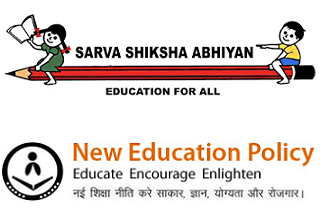- The Rs 20,000 crore stationery industry in the country is poised for innovation and growth.
- Little over 90% of the manufacturing is within the unorganized sector, which is the main reason for the region-wise fragmentation of the market.
- The industry is expected to register CAGR growth of 15 per cent in the next few years. The writing paper industry is estimated at Rs 10,000 crore and notebooks have share of Rs 7,000 crore,“ Federation of Maharashtra Stationery Manufacturers & Traders Association.
- The average global per capita consumption of paper is 52kgs; while the Indian average is 8kgs.
- The continued economic reforms and emphasis on eradication of illiteracy will fuel the growth in consumption of paper.
- The paper stationery business relates directly to the rate of literacy, which is currently about 68% in India.
- With revival in economy at large the paper consumption is expected to increase as the GDP Increases.
- Import rose from 2 thousand to 10 thousand tones.
- Paper industry is at 35 in the high priority list.
Market Overview
Providing international quality school paper stationery

The growth in paper industry has mirrored the growth in GDP and has grown on an average 6-7% over last few years.
There is tremendous potential of growth in the domestic market as the country has nearly 22-24 crore students studying and require notebooks and other stationery materials for study. The government’s demonetisation programme will help the unorganised trade to fall in line with the organised trade and likely introduction of GST next year will benefit the industry in a big way.
The paper stationery business relates directly to the rate of literacy, which is currently about 61% in India. This means that there is lot to achieve in this regard. Since independence, education has been visualised in the government policies as precursor to national development as well as to better quality of life. In the education policy of 1968 it was envisaged that public expenditure on education as a proportion of GDP should touch 6%. However, it has not gone beyond 3.9% till date. The 11th FYP stresses the urgency on this front because the 86th Amendment to the Indian Constitution made free and compulsory education, a fundamental right for all children in the age group of 6-14 years.
In the present era of globalisation, liberalization and privatisation, education is viewed not only as an input to empowerment and social justice, but also as being basic to the very survival of individuals and nations. This is where the Sharva Siksha Abhiyan {SSA} as an important objective of National Education Policy {NEP} has addressed the need of providing elementary education and the surveys show that 90% of rural population was served by primary schools in 2002-03. Quality of education in terms of better educational attainment levels is a thrust area for the next phase of SSA in the 11th FYP. With the government’s ambitious ‘Sarva Shiksha Abhiyan’ will also see huge investment of Rs 60,000 crore spend will benefit the industry.
All this augurs well for our Company’s business and its growth potential. Emphasis on education brings with it the increasing need for producing and supplying various learning materials and paper stationery products.

